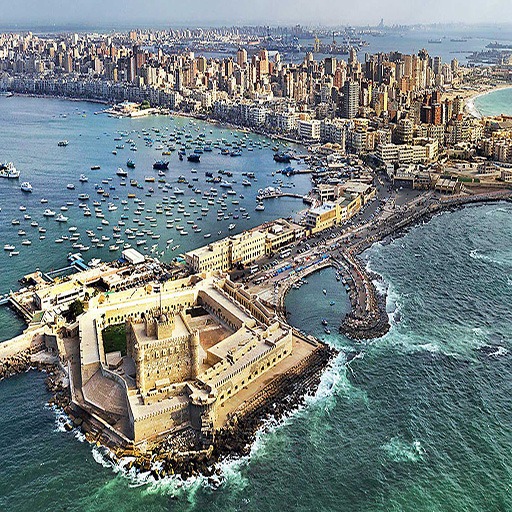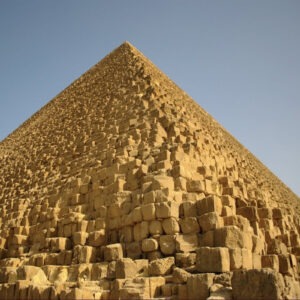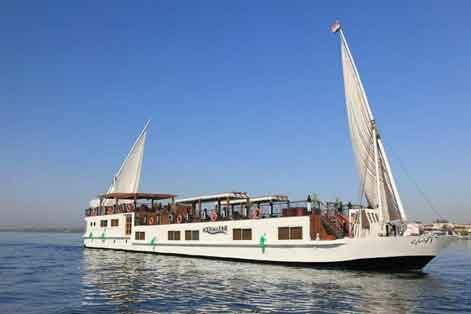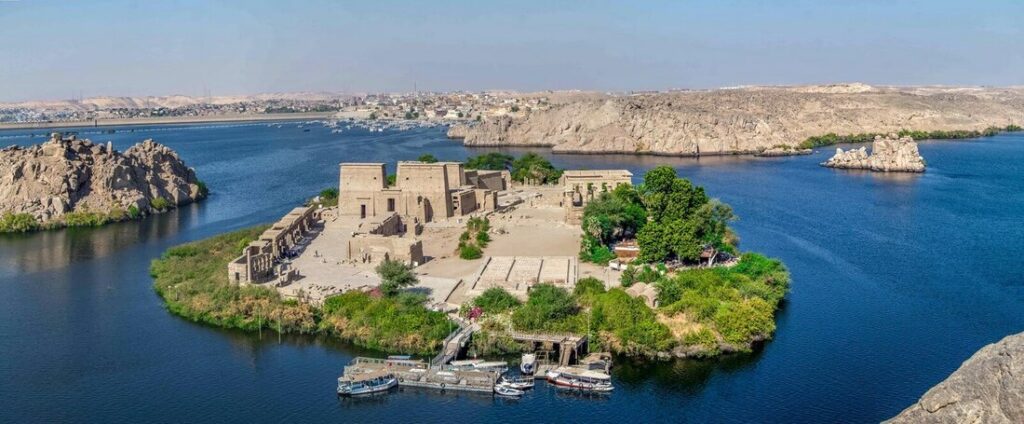The City of Alexandria, Egypt
Alexandria is considered the second capital of the Arab Republic of Egypt after Cairo. It is the capital of the Alexandria Governorate and the largest of it. It extends along the Mediterranean coast for a length of about 55 km. It is bordered to the north by the Mediterranean Sea, it is bordered to the south by Beheira Governorate and Lake Mariout, and it is bordered to the east by Beheira Governorate and Abu Qir Bay. From the west, the international coastal road and Burj Al Arab Center.
Therefore, the city of Alexandria is considered a coastal city par excellence due to the city’s great capabilities that qualify it to be the bride of the Mediterranean and the most beautiful Egyptian city, also due to the moderate climate that the city enjoys throughout the year, and also through its possession of many distinctive landmarks, including historical landmarks and modern landmarks.
It is also considered a first-class cultural province because it includes the Library of Alexandria, and a number of museums and archaeological sites such as the Alexandria Museum, the Greco-Roman Museum, Qaitbay Citadel, the Pillar Column, and the cemeteries of Kom el-Shuqafa.
History of the city of Alexandria:
The process of establishing the city of Alexandria began at the hands of Alexander the Great in 332 BC, or in other words, it is a city steeped in the roots and depths of history, as Alexander the Great and his successors made it the capital of Egypt for more than a thousand years.
Where Alexander the Great worked to fill a part of the water that separated a village on the main coast called “Raktos” from an island called “Pharos”, after the city flourished at the hands of Alexander and his successors until the Islamic conquest of Egypt in the year 641 at the hands of Amr ibn al-Aas, some see Historians attribute the reason for choosing Alexandria as the capital of the state by Alexander the Great to an ancient story that tells of the lost king of Ithaca and his army about their arrival to the shores of Egypt at the island of Pharos, because they were able to see from Kawthar this country under which rivers flow.
This city became famous for its many landmarks, such as the ancient Library of Alexandria, which contained more than seven hundred thousand volumes
The Lighthouse of Alexandria, which was considered one of the Seven Wonders of the World due to its great height, which reaches about 120 metres. This lighthouse remained standing until it collapsed due to an earthquake in 1307.
Building the city of Alexandria:
۔ Alexander the Great entrusted the engineer Dino Karatis with building the city of Alexandria, which was built in the style of Greek cities, and he arranged it so that the horizontal streets ran perpendicular to the vertical streets, as well as the construction of a bridge between the island of Pharos and the village of Raktos, where Alexander the Great, after being impressed by the site, worked to make it the city that bears his name. A connecting point between Egypt and Greece.
Alexandria in ancient times:
Before the entry of Alexander the Great, Alexandria witnessed the presence of the Persian occupation after the fall of the Pharaohs and the Thirty Dynasty, as Egypt was not alone under Persian occupation, as the Levant and Iraq were also with it. At the same time, the growing power of the Greeks appeared, as confrontations between them began in the year 334 BC and the battles continued until Alexander the Great entered Tire and Gaza, then entered Egypt and controlled it a year later. The city was under Roman control during the reign of Ptolemy Fights and kills her brother.
Alexandria in the Middle Ages:
After the division of the Roman Empire into two parts, the western Roman and the eastern Roman-Byzantine, Alexandria was subject to the eastern camp with the Byzantine Empire.
In the seventh century AD, Alexandria was subjected to Persian rule after
the Persian Empire attacked Egypt and the Levant and took advantage of the state of weakness that harmed the Byzantine Empire. However, Persian rule did not last long, as Heraclius was able to return Alexandria to Byzantine rule.
Heraclius appointed a powerful patriarch to entrust him with the presidency alongside the religious authority. He was “Al-Muqawqis” who entered Islam during the era of wisdom in Egypt when the Messenger Muhammad, may God bless him and grant him peace, called him to Islam.
This was the beginning of Egypt’s era of Islam until Egypt was conquered by Amr ibn Al-Aas in the time of The Rightly Guided Caliph Omar Ibn Al-Khattab. During that period, Alexandria lost its political status due to Amr Ibn Al-Aas taking the city of Fustat as the capital of Egypt. However, it remained the main commercial port for Egypt, as trade was active in Alexandria during the Islamic era, and then it was the meeting center for many scholars such as Ibn Khaldun and the Imam. Al-Shattabi.
Alexandria in the modern era:
Alexandria did not differ from the Middle Ages, as it was still coveted by everyone along with the rest of the Egyptian lands, from the fall under the weight of Ottoman rule after the defeat of the Mamluks at the hands of the Ottoman Sultan Selim I, and then the French campaign against Egypt and the entry of the French, led by Napoleon Bonaparte, into Alexandria, where the city witnessed a great battle between the French forces and the British forces that offered assistance to the Ottoman Sublime Porte to expel the French from Egypt, which led to the defeat of the French and their exit from Egypt.
Then the state of the renaissance that the city witnessed at the hands of Muhammad Ali Pasha and his successors, including the construction of the Marine Industry House (currently the Alexandria Arsenal), and the digging of the Mahmoudiya Canal to connect Alexandria to the Nile River.
During the reign of Khedive Ismail in particular, it witnessed great and unprecedented interest, as he created new streets and neighborhoods, illuminated the city, laid a sewage network, rainwater drainage, and paved the city’s streets.
The city also witnessed many unfortunate events in the modern era, such as the violent bombing that the city was subjected to by the British fleet until the city fell and the beginning of the era of the British occupation of Egypt, as well as the violent bombing during World War II from the aircraft of the Axis powers, until Alexandria reached what it is. Now it is of great importance as it is considered the most important commercial port in the Mediterranean basin.
Climate of Alexandria:
Alexandria is characterized by a moderate climate, as it is dominated by the Mediterranean climate, known for its hot summers and moderate rainy winters. During the winter, Alexandria is also exposed to thunderstorms, storms, and heavy rains, as spring and fall are considered the best times of the year during which one can visit the city of Alexandria, as the temperature does not exceed the maximum. There are 22 degrees during them.
Archaeological areas in Alexandria:
Alexandria is characterized by the richness and diversity of archaeological monuments and times, such as:
1. Tombs of Kom el-Shuqafa:
Which dates back to the second era AD and was given this name due to the large number of crushed remains and pottery remains that accumulated in this place, as it is distinguished by its breadth and abundance of decorations and expresses the intersection of Pharaonic and Roman art.
As well as many monuments, such as the tombs of Mustafa Kamel and the tombs of Al-Anfushi and Al-Shatibi.
2. Pompey Pillar:
It reaches a length of about 27 meters and is considered one of the most famous landmarks of Alexandria, where the Pillar Column was erected in memory of Emperor Diocletian in the third century AD.
3. Temple of the Serapeum:
It is an ancient temple whose discovery dates back to the year 1943, when it was established during the reign of Ptolemy III. It is distinguished by its design in the Pharaonic style, with the addition of some Greek elements.
4. Qaitbay Citadel:
The castle was built on the ancient site of the Alexandria Lighthouse, and was built by Sultan Al-Ashraf Abu Al-Nasr Qaytbay to defend the city of Alexandria.
5. Roman theatre:
It is one of the monuments of the Roman era, as it was built at the beginning of the fourteenth century AD, and it is the only Roman theater in Egypt.
6. Alexandria is distinguished by the presence of many museums, such as the National Museum of Alexandria, the Greco-Roman Museum, the Royal Jewelry Museum, and the Sunken Museum.
7. Alexandria’s aesthetics are also distinguished by the presence of several beautiful palaces, such as Montazah Palace, Ras al-Tin Palace, Al-Safa Palace, Aziza Fahmy Palace, and many others from the archaeological world, which makes Alexandria a global destination that you can enjoy visiting all year round and enjoy visiting archaeological areas and the moderate climate in summer and winter.
Egypt Tour Packages Including The City of Alexandria
-
Day Tour to Alexandria City from the Port Leave your ship in port to see the sights of Egypt’s second city. Visit Qaitbay Citadel, the reconstructed Bibliotheca Ale
-
8 Day Cairo, Alexandria and Nile Cruise Tour Package by Flight
Rated 5.00 out of 5Egypt Tour Packages$3,500.00$2,800.00Why you’ll love this trip: Experience the mysteries and treasures of Egypt in 7 nights trip. Embark on a leisurely paced 4-ni -
What to bring with you? A trip to Egypt takes you to a mystical destination where you can discover th
-
From $1620 🎗 10% OFFAbu Simbel, Alexandria, Aswan, Cairo, Egypt, Hurghada, Luxor
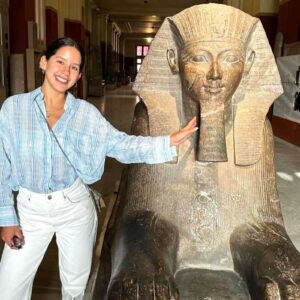
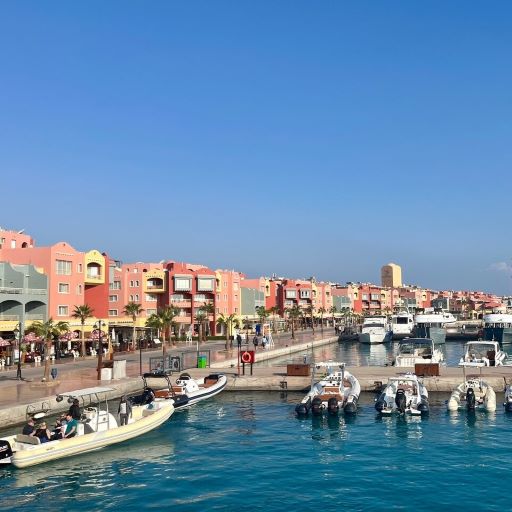 Sale! Add to cart
9 Days Deluxe Nile cruise + Domestic flight
Sale! Add to cart
9 Days Deluxe Nile cruise + Domestic flight9 Days Egypt Vacation from Cairo to Alexandria and Nile Cruise
Rated 5.00 out of 5Cairo and Abu Simbel Tour packages$2,300.00$1,800.00Our precisely planned 9 Days Egypt Vacation from Cairo will take you from the hectic streets of Cairo to the serene Egypt temples, the spectacular pyramids of Giza to the -
Day Trip to the Pyramids from Alexandria Port Drive to Cairo from Alexandria Port to see the Pyramids of Giza and the Sphinx. Then, go to Cairo’s center to board a
-
9 Day Cairo, Alexandria and Nile Cruise Tour Package by Flight
Rated 5.00 out of 5Egypt Tour Packages$3,500.00$2,800.00Why you’ll love this trip: Experience the mysteries and treasures of Egypt in 8 nights trip. Embark on a leisurely paced 4-night cruise on the Nile, the wor


